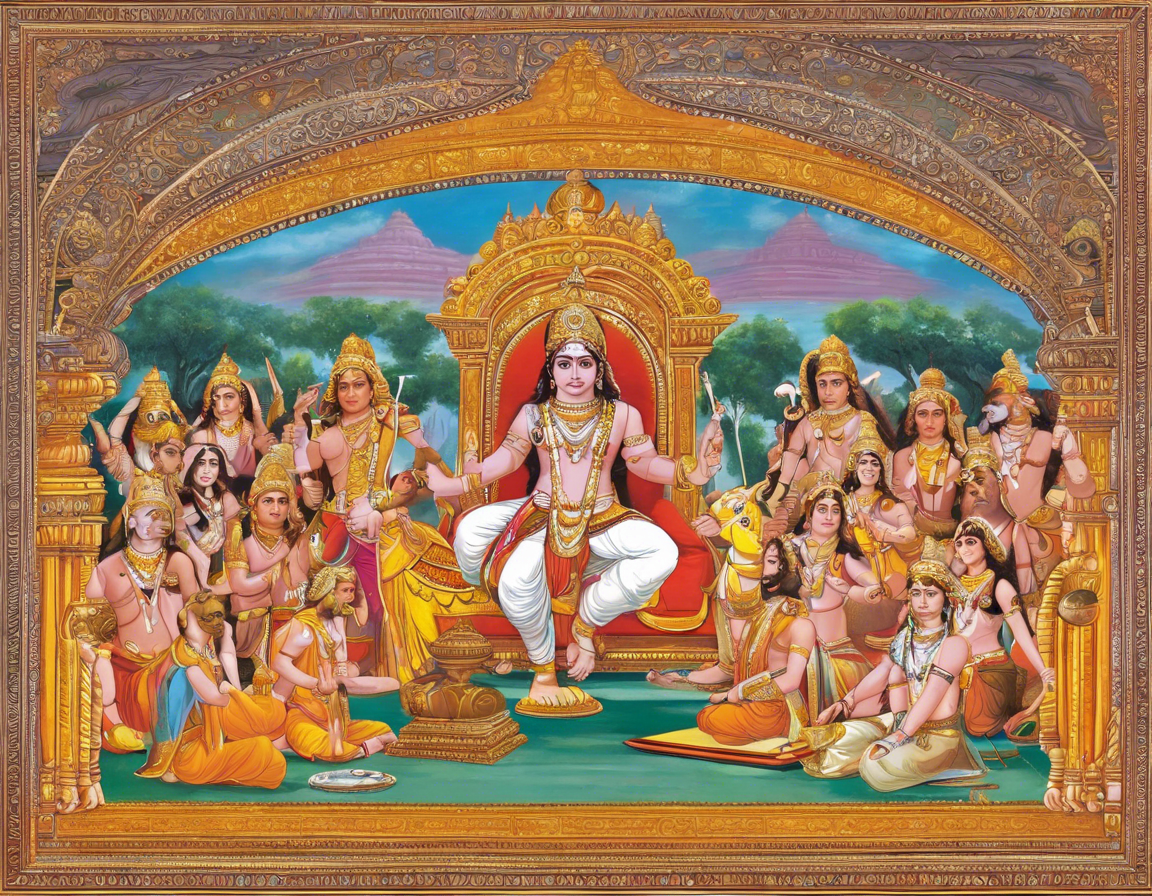The Mahabharata is one of the greatest and most revered epics in Ancient Indian literature. Comprising over 1.8 million words, it is not only one of the longest epics in the world but also a repository of immense knowledge and wisdom. Attributed to the sage Vyasa, the Mahabharata is not just a story, but a comprehensive guide to life, ethics, and spirituality. In this article, we will explore the authorship of the Mahabharata, delving into the history, significance, and key characters of this ancient Indian epic.
Vyasa: The Author of the Mahabharata
The Mahabharata is traditionally ascribed to the sage Vyasa, also known as Veda Vyasa or Krishna Dvaipayana Vyasa. Vyasa is a central and revered figure in Hindu tradition, credited with compiling the Vedas and writing various Puranas. According to legend, Vyasa is the son of Parashara, a sage, and Satyavati, a fisherwoman.
Vyasa played a pivotal role in the composition of the Mahabharata by dictating the verses to Lord Ganesha, who wrote them down. The epic is said to be narrated by Vyasa to Vaishampayana, who then recites it to King Janamejaya. The story unfolds as a dialogue between Vaishampayana and Janamejaya, providing insights into dharma (duty), righteousness, and the cosmic order.
History and Significance of the Mahabharata
The Mahabharata is believed to have been composed between the 8th and 9th centuries BCE, although some scholars suggest an earlier date. The epic is set against the backdrop of the Kurukshetra War between the Pandavas and the Kauravas, two branches of the Kuru dynasty. The narrative explores themes of power, duty, morality, and the consequences of actions.
One of the most significant sections of the Mahabharata is the Bhagavad Gita, a conversation between Lord Krishna and the warrior prince Arjuna on the battlefield of Kurukshetra. The Bhagavad Gita addresses fundamental questions about life, duty, and the nature of reality, offering profound insights into the human condition.
Key Characters in the Mahabharata
The Mahabharata is replete with a diverse cast of characters, each representing different facets of human nature and ethical dilemmas. Some of the key characters include:
- Yudhishthira: The eldest of the Pandava brothers known for his adherence to truth and righteousness.
- Bhima: Known for his strength and valor, Bhima is the second Pandava brother.
- Arjuna: A skilled archer and the third Pandava brother, Arjuna is the protagonist of the Bhagavad Gita.
- Krishna: The charioteer and guide of Arjuna, Krishna is considered an incarnation of the god Vishnu.
- Draupadi: The wife of the Pandavas, Draupadi is a symbol of feminine strength and resilience.
Themes and Lessons from the Mahabharata
The Mahabharata addresses a wide range of themes that are relevant even today. Some of the key lessons from the epic include:
- Dharma: The concept of duty and righteousness is a central theme in the Mahabharata.
- Karma: The idea of moral cause and effect is prominent throughout the epic.
- Family and Relationships: The complexities of family dynamics and relationships are explored in depth.
- Power and Politics: The Mahabharata delves into the intricacies of power struggles and political intrigue.
- Spirituality: The epic offers profound spiritual teachings through the Bhagavad Gita and the wisdom of its characters.
Frequently Asked Questions (FAQs)
-
Who is the central figure in the Mahabharata?
Vyasa is traditionally considered the author of the Mahabharata, while key characters like Arjuna and Krishna play central roles in the narrative. -
What is the Bhagavad Gita, and why is it significant?
The Bhagavad Gita is a sacred text within the Mahabharata, where Lord Krishna imparts spiritual wisdom to Arjuna. It addresses fundamental questions about life, duty, and morality. -
What are some key lessons from the Mahabharata?
The epic teaches valuable lessons on dharma, karma, family dynamics, power, and spirituality, offering profound insights into human nature. -
How long is the Mahabharata?
The Mahabharata comprises over 1.8 million words, making it one of the longest epics in the world. -
When was the Mahabharata composed?
The Mahabharata is believed to have been composed between the 8th and 9th centuries BCE, although the exact date is a subject of scholarly debate.
In conclusion, the Mahabharata stands as a timeless epic that continues to resonate with audiences worldwide. Its rich tapestry of characters, themes, and teachings serves as a guide for navigating the complexities of life and understanding the deeper truths of existence. As we delve into the world of the Mahabharata, we are reminded of the enduring legacy of Vyasa, the sage whose vision and wisdom continue to inspire generations.


